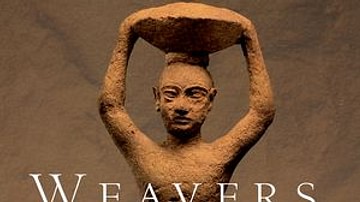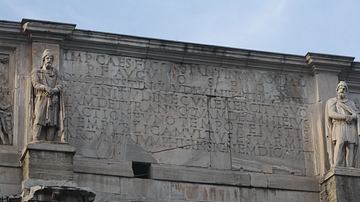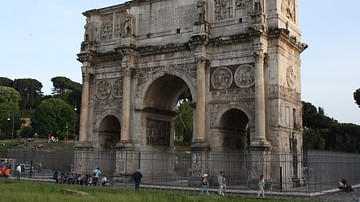Search
Remove Ads
Advertisement
Summary 
Loading AI-generated summary based on World History Encyclopedia articles ...
Search Results

Interview
Weavers, Scribes, and Kings: A New History of the Ancient Near East with Amanda H. Podany
In this interview, World History Encyclopedia sits down with author and Assyriologist Amanda H. Podany to learn all about her new book Weavers, Scribes, and Kings: A New History of the Ancient Near East published by Oxford University Press...

Video
A New History of the Ancient Near East with Amanda Podany
Weavers, Scribes, and Kings: A New History of the Ancient Near East by Amanda H. Podany is a unique history of the ancient Near East that compellingly presents the life stories of kings, priestesses, merchants, bricklayers, and others. Rather...

Image
Weavers, Scribes, and Kings: A New History of the Ancient Near East by Amanda H. Podany
Weavers, Scribes, and Kings: A New History of the Ancient Near East by Amanda H. Podany

Image
Amanda H. Podany
Amanda H. Podany, the author of Weavers, Scribes, and Kings: A New History of the Ancient Near East published by Oxford University Press.

Video
Kabuki: The people's dramatic art - Amanda Mattes
The Japanese dance and theater art of kabuki, derived from the word kabuku, meaning "out of the ordinary," can be traced back to the streets of seventeenth-century Kyoto. Kabuki became a dramatic art for the common people, with its use of...

Image
Inscription, Arch of Constantine I
The inscription which appears on both sides of the Arch of Constantine I in Rome. Dedicated in 315 CE, the triumphal arch celebrates the emperor's victory over the Roman tyrant Maxentius in 312 CE. The inscription reads: IMP CAES FL CONSTANTINO...

Article
The Arch of Constantine, Rome
The Arch of Constantine I, erected in c. 315 CE, stands in Rome and commemorates Roman Emperor Constantine's victory over the Roman tyrant Maxentius on 28th October 312 CE at the battle of Milvian Bridge in Rome. It is the largest surviving...

Article
Louis IX and Capetian Politics at Paris' Sainte-Chapelle
The Sainte-Chapelle in Paris was originally consecrated as a private royal chapel in 1248 during the reign of King Louis IX of France (r. 1226-1270), who was known in life as rex christianissimus ('most Christian king') and canonized in death...

Video
Gods of Thunder in Precolonial America - Interview with Tim Pauketat
Timothy R. Pauketat is an American archaeologist, director of the Illinois State Archaeological Survey, the Illinois State Archaeologist, and professor of anthropology and medieval studies at the University of Illinois at Champaign-Urbana...

Video
Peerless among Princes: The Life and Times of Sultan Suleyman with Kaya Sahin
A full life and times biography of Süleyman, the longest reigning sultan of the Ottoman Empire. Süleyman, who ruled the Ottoman Empire between 1520 and 1566, was a globally recognized figure during his lifetime. His domain extended from Hungary...